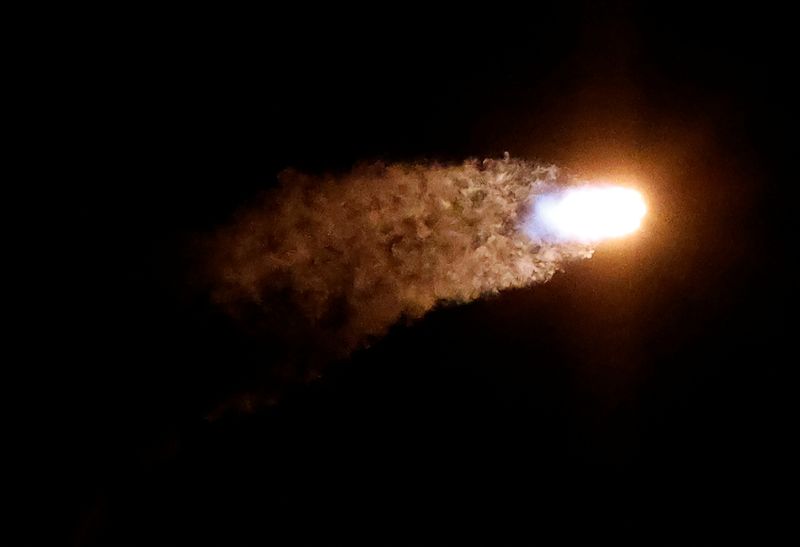By Steve Gorman
(Reuters) -A moon lander built by Houston-based company Intuitive Machines reached lunar orbit on Wednesday, heading for an attempt at the first U.S. touchdown on Earth's nearest celestial neighbor in more than 50 years, and the first ever by a private spacecraft.
The six-legged robot lander, dubbed Odysseus, entered a circular orbit 57 miles (92 km) above the lunar surface after firing its main rocket thruster for nearly seven minutes in an orbital insertion maneuver, the company said in an online statement.
The spacecraft was expected to begin final descent with another blast from its main engine about an hour before landing, with touchdown planned for 5:30 p.m. EST (2230 GMT) on Thursday at crater Malapert A near the moon's south pole, according to Intuitive Machines' latest flight plan.
The vehicle is carrying a suite of science instruments and technology demonstrations for NASA and several commercial customers designed to operate for seven days before the sun sets on the polar landing site.
Odysseus remains "in excellent health," the company said, adding that for the duration of its lunar orbit roughly 239,000 miles (384,000 km) from Earth, mission controllers in Houston would monitor flight data from the spacecraft and transmit images of the moon.
Odysseus, a 13-foot-tall (4 meters) NOVA C-class lander, was launched six days ago, on Feb. 15, atop a Falcon 9 rocket built and flown by Elon Musk's California-based company SpaceX from NASA's Kennedy Space Center in Cape Canaveral, Florida.
If the landing succeeds, the IM-1 mission would represent the first controlled descent to the lunar surface by a U.S. spacecraft since Apollo 17, when NASA's last crewed moon mission carried Gene Cernan and Harrison Schmitt landed there in 1972.
It also would mark the first "soft landing" on the moon ever by a commercially manufactured and operated vehicle and the first under NASA's Artemis lunar program, as the U.S. races to return astronauts to Earth's natural satellite before China lands its own crewed spacecraft there.
MONTH AFTER FAILURE
The IM-1 mission comes about a month after the lunar lander of another firm, Astrobotic Technology, suffered a propulsion system leak on its way to the moon shortly after being placed in orbit on Jan. 8 by a United Launch Alliance (ULA) Vulcan rocket making its debut flight.
The malfunction of Astrobotic's Peregrine lander, which was also flying NASA payloads to the moon, was the third time a private company had failed to achieve a lunar touchdown, following ill-fated efforts by companies from Israel and Japan.
Those mishaps illustrated the risks NASA faces in leaning more heavily on the commercial sector than it had in the past to realize its spaceflight goals.
Although considered an Intuitive Machines mission, the IM-1 flight is carrying six NASA payloads of instruments designed to gather data about the lunar environment ahead of NASA's planned first crewed Artemis mission to the moon later this decade.
Intuitive Machines was co-founded in 2013 by Stephen Altemus, former deputy director of NASA's Johnson Space Center in Houston and now the company's president and CEO.
NASA announced last month that it was delaying its target date for a first crewed Artemis moon landing from 2025 to late 2026, while China has said it was aiming for 2030.

Small landers are expected to get there first, carrying instruments to closely survey the lunar landscape, its resources and potential hazards. Odysseus will focus on space weather interactions with the moon's surface, radio astronomy, precision landing technologies and navigation.
To date, spacecraft from just five countries have ever landed on the moon - the United States, the former Soviet Union, China, India and, mostly recently just last month, Japan.